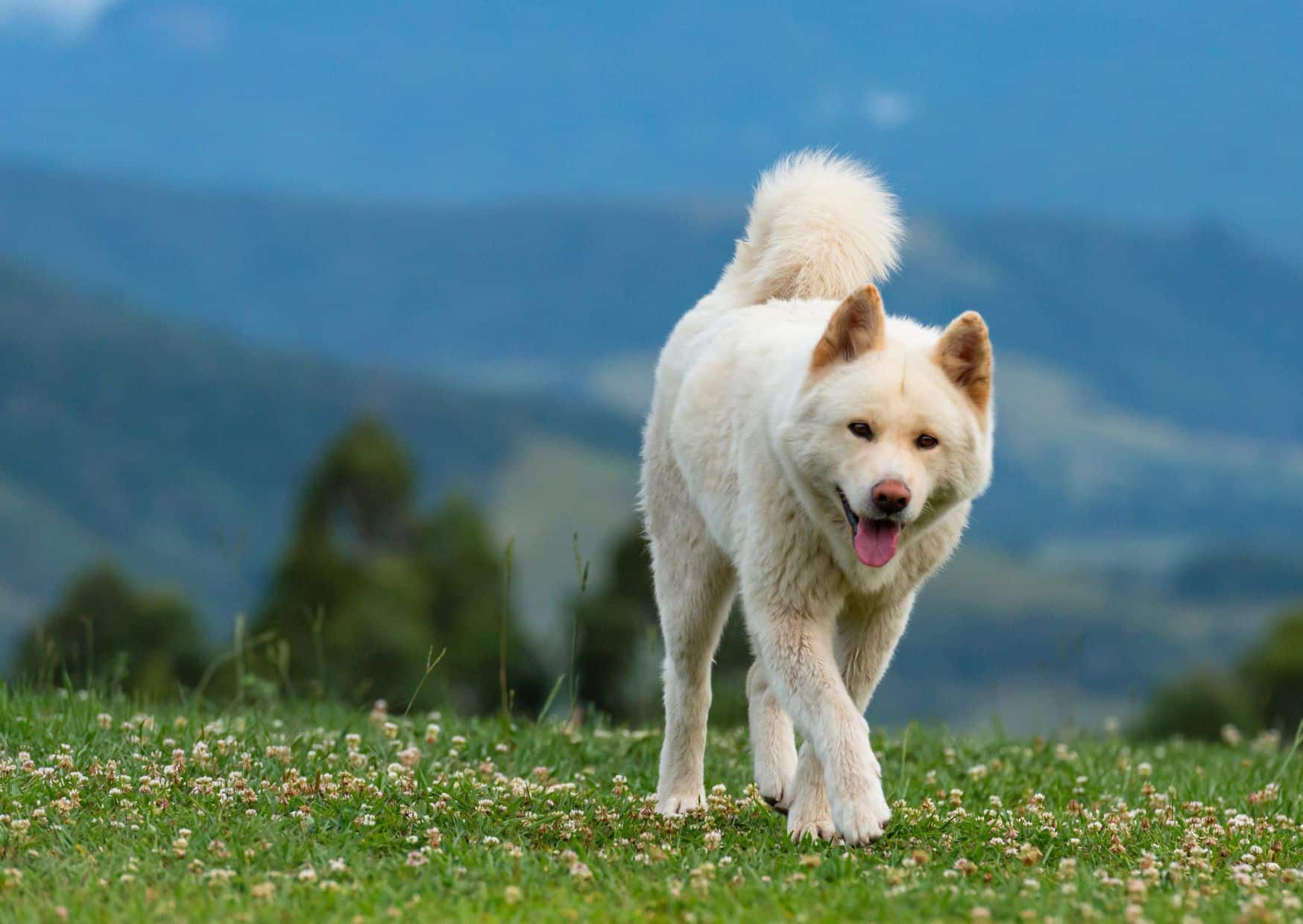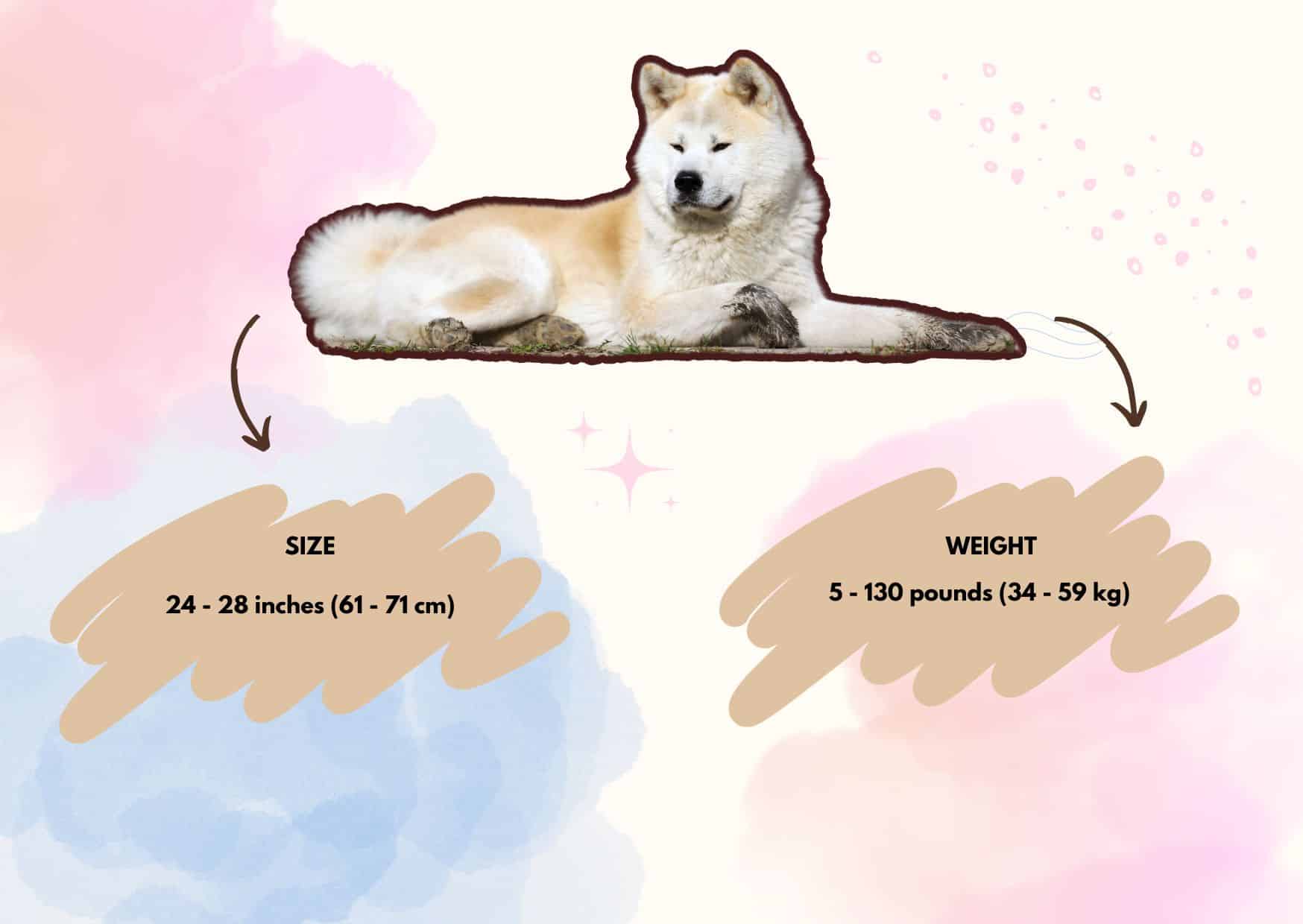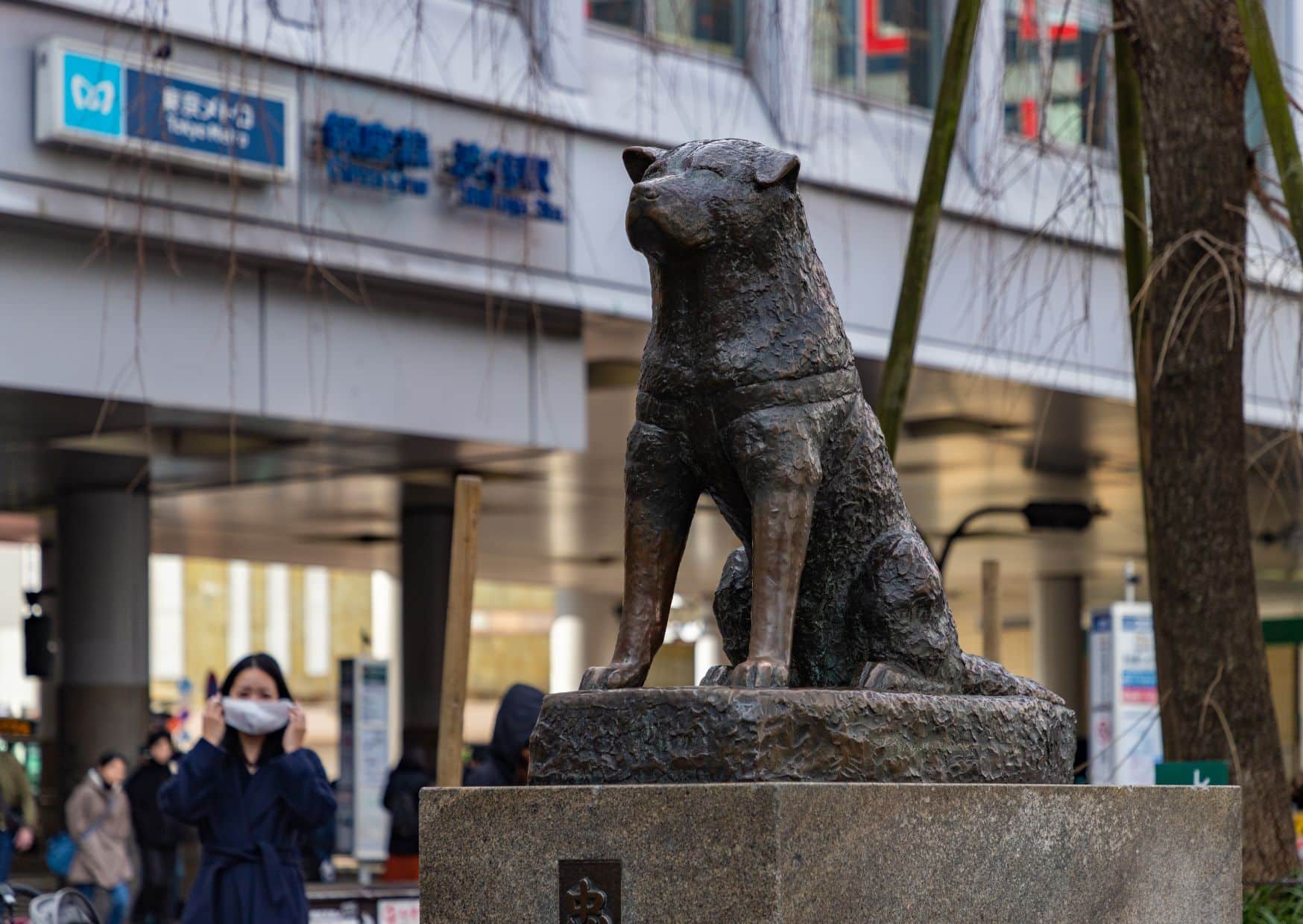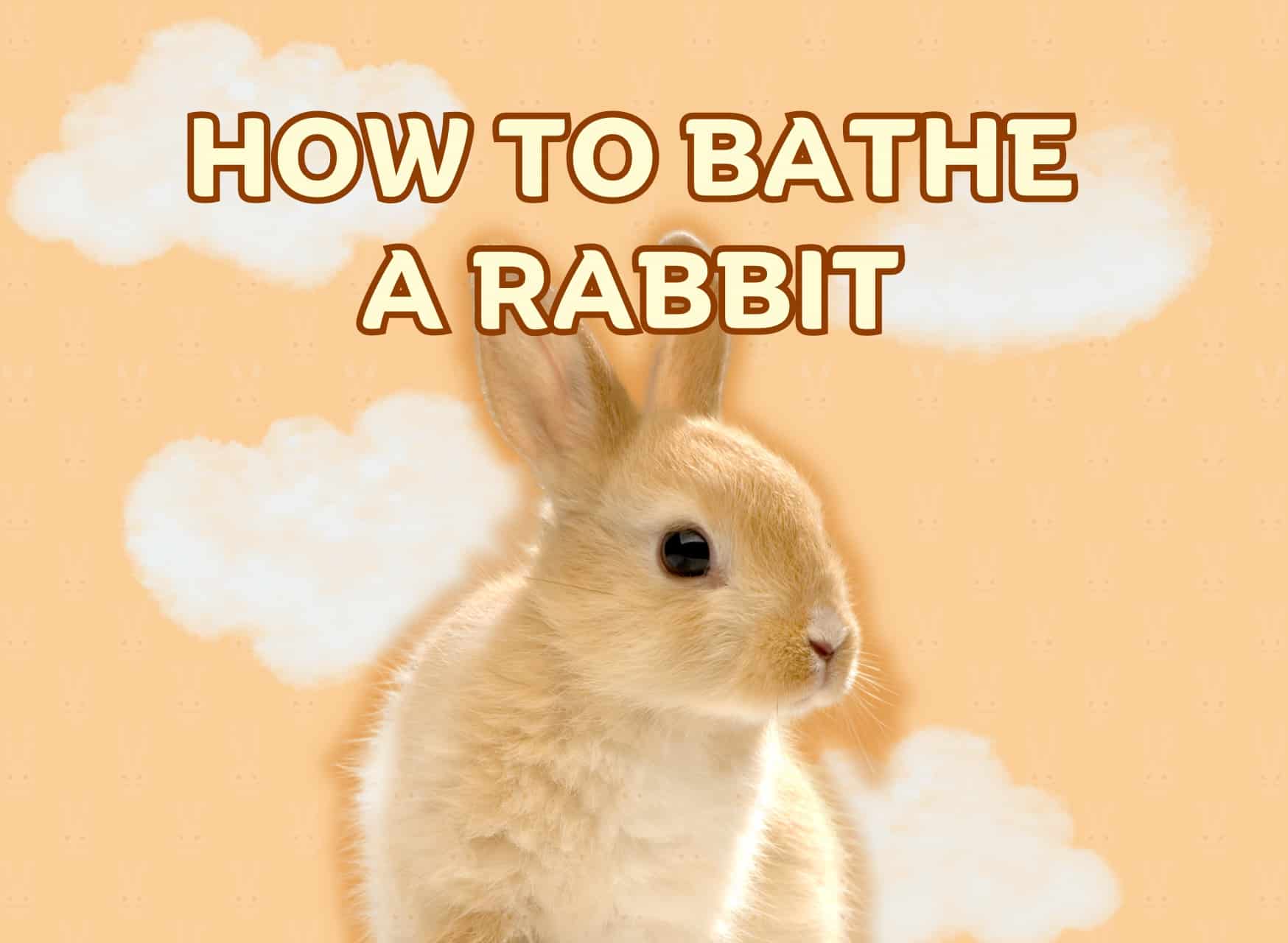The Magnificent Akita: Exploring the Grace and Majesty of the Akita Dog Breed

Sharing is Caring!
Discover the fascinating world of Akita dogs, their unique traits, and how to care for them as first-time dog owners. Learn about their history, appearance, temperament, and training tips in this comprehensive guide.
Introduction
The Akita dog breed is a captivating and noble companion that boasts a rich heritage rooted in ancient Japan. With their striking appearance, unwavering loyalty, and gentle temperament, Akitas have garnered immense popularity worldwide. In this article, we will explore the fascinating history, physical characteristics, temperament, and care requirements of the Akita breed. Whether you’re an aspiring dog owner or a seasoned enthusiast, this comprehensive guide will provide valuable insights into the world of Akita dogs.
Origins and Historical Significance

Ancient origins in Japan
The Akita breed can trace its roots back to ancient Japan, where they were highly revered and esteemed. Believed to be one of the oldest native Japanese dog breeds, Akitas have a storied history that spans centuries. The exact origins of the breed are not entirely clear, but it is widely accepted that Akitas are descendants of the Matagi-Inu, a breed of hunting dogs that were utilized by the indigenous Ainu people of Japan.
Historical roles of Akitas as hunting and guard dogs
Japanese Akitas were initially bred for their exceptional hunting skills, which made them invaluable to the Ainu people. With their innate strength, agility, and remarkable scenting abilities, Akitas were primarily employed to hunt large game, including bears, boars, and deer. Their tenacity and fearlessness in the face of formidable adversaries earned them a reputation as formidable hunting companions.
As time went on, Akitas also found themselves assuming the role of loyal and dependable guard dogs. Their natural instinct to protect their families and territories made them ideal guardians. Akitas were entrusted with safeguarding homes, temples, and even imperial palaces in Japan. Their formidable presence and unwavering devotion to their owners solidified their position as esteemed protectors.
Cultural significance and symbolism of Akitas in Japanese society
In Japanese culture, Akitas hold a significant place and are highly regarded for their symbolism and association with noble traits. They have been celebrated as symbols of loyalty, courage, and fidelity. One of the most famous examples is the legendary tale of Hachiko, an Akita who faithfully waited for his deceased owner at a train station every day for nearly 10 years. Hachiko’s unwavering devotion touched the hearts of people across the nation and became a symbol of loyalty and devotion.
Additionally, Akitas are often depicted in Japanese artwork, literature, and folklore as noble and majestic creatures. They are frequently associated with traits such as strength, dignity, and honor. Akitas have even been designated as a national treasure in Japan, further highlighting their cultural significance and deep-rooted connection to the country’s heritage.
The historical significance and cultural symbolism surrounding Akitas contribute to their enduring popularity and the continued reverence they receive both within Japan and around the world. Recognizing their importance, the American Kennel Club officially recognized the Akita breed in 1972, further solidifying their status as a distinguished and cherished breed. As we delve further into the exploration of the Akita dogs we will uncover more fascinating aspects of Akita temperament, characteristics, and care, shedding light on their continued allure as magnificent companions.
Characteristics of Akitas
Physical Characteristics

Size, weight, and general appearance
The Akita is a powerful and large dog breed, Akita traits known for its robust build and impressive stature as adult dog. Adult Akitas typically stand between 24 to 28 inches (61 to 71 cm) at the shoulder and weigh between 75 to 130 pounds (34 to 59 kg), with large breeds’ males generally being larger than females. Their muscular bodies and well-developed frames give them an imposing presence.
Distinctive facial features and body structure
Akitas have distinct facial features that contribute to their unique appearance. They typically have a broad head, a strong and pronounced muzzle, and dark, almond-shaped eyes that reflect their intelligence and alertness. Their ears are triangular and set high on the head, often standing erect. Akita dog breeds boast a thick double coat, consisting of a dense undercoat and a straight, coarse outer coat, which helps protect them from various weather conditions.
Temperament and Personality
Loyalty, devotion, and protective instincts
The Akita dog temperament is renowned for their unwavering loyalty and devotion to their families. They form deep bonds with their own family pet and dog owners and are fiercely protective when it comes to safeguarding their loved ones and territories. This loyalty extends to their natural inclination to be vigilant guardians, making them excellent protectors dogs, and watchful companions.
Independent nature and strong-willed personality
Alongside their loyalty, Akitas personality possesses an independent and strong-willed nature. They exhibit a level of self-assurance and confidence that reflects their history as hunting and guard dogs. This independent streak can make them more challenging to train compared to some other breeds large dogs. They require an experienced and patient owner who can provide firm, consistent leadership and positive reinforcement training methods to guide their strong personalities effectively.
Training and Socialization
Importance of early training and socialization for Akitas
Early training and socialization play a crucial role in shaping the behavior and temperament of Akitas. Starting training from a young age is essential to establish a foundation of good manners, obedience, and proper behavior. Socialization exposes Akitas to various people, other dogs, animals, and environments, helping them develop confidence and adaptability. It is during this critical period that they learn to navigate the world around them and understand appropriate responses to different situations.
Challenges and tips for training an Akita
Training an Akita inu dog can present some unique challenges due to their independent and strong-willed nature. They are intelligent dogs with a keen sense of their own capabilities, which can sometimes lead to stubbornness or a desire to assert their dominance. Therefore, it is important to approach training with patience, consistency, and positive reinforcement techniques.
Providing clear and consistent rules and boundaries is essential for Akita’s training success. Establishing yourself as a confident and reliable leader helps them understand their place within the family hierarchy. Avoid using harsh training methods or resorting to physical punishment, as it can lead to fear or aggression.
Consistency is key when training an Akita breed. Set a regular training schedule and stick to it. Keep training sessions short and engaging, using rewards such as treats, praise, and playtime to motivate and reinforce desired behaviors. Akitas respond well to positive reinforcement, so focus on rewarding good behavior rather than punishing undesirable actions.
Establishing a strong bond and mutual understanding
Building a strong bond with your Akita inu, is crucial for successful training and a harmonious relationship. Spend quality time with your Akita dog, engaging in activities that they enjoy, such as walks, play sessions, and training exercises. This not only provides physical and mental stimulation but also strengthens the bond between you and your dog.
Communication is key to establishing mutual understanding. Learn to read your dog’s body language and subtle cues, which will help you anticipate their needs, Akita behavior and address any concerns or anxieties. Consistent training and positive reinforcement create clear lines of communication and foster a trusting and respectful relationship.
Remember, training is a lifelong process. Even after basic obedience is established, continue to engage your pup in mental stimulation and ongoing training to keep their minds active and maintain their well-behaved demeanor.
Common Health Issues
Genetic predispositions to certain health conditions
Like all dog breeds, Akitas have certain genetic predispositions to specific health conditions. It is important for their owners to be aware of these potential issues and take proactive measures to promote their dog’s well-being. Some of the common pet health concerns in Akitas include:
Hip Dysplasia: This condition occurs when the hip joint is improperly formed, leading to discomfort and decreased mobility.
Progressive Retinal Atrophy (PRA): PRA is a degenerative eye disease that gradually leads to vision loss and, in severe cases, blindness.
Autoimmune Disorders: Akitas may be prone to certain autoimmune disorders, where the immune system mistakenly attacks the body’s own cells and tissues.
Thyroid Problems: Hypothyroidism and autoimmune thyroiditis are seen in some Akitas, affecting the proper functioning of the thyroid gland.
Regular veterinary care and monitoring
To maintain the health and well-being of your Akita, regular veterinary care and monitoring are essential. Schedule routine check-ups with a trusted veterinarian to ensure early detection of any potential health issues. During these visits, the vet will perform a comprehensive examination, including screenings for genetic diseases, hip evaluations, and eye tests.
Additionally, vaccinations, parasite prevention, and dental care should be part of the regular healthcare regimen for Akita dogs. Stay up to date with vaccinations and administer preventive treatments for fleas, ticks, and heartworms as recommended by your veterinarian. Regular dental cleanings and at-home dental care, such as tooth brushing, can help prevent dental diseases and maintain good oral health.
Tips for maintaining good health in Akitas
In addition to regular veterinary care, there are several steps you can take to promote good health in your Akita:
Provide a balanced diet: Feed your Akita a high-quality, nutritionally balanced diet appropriate for their age and activity level. Consult with your veterinarian to determine the best diet plan for your dog’s specific needs.
Exercise and mental stimulation: Akita dogs are an active breed that requires regular exercise to maintain a healthy weight and mental stimulation to prevent boredom. Provide daily exercise through walks, playtime, and interactive toys to keep them physically and mentally engaged.
Weight management: Obesity can lead to various health issues, including joint problems and reduced lifespan. Monitor your Akita’s weight and adjust their diet and exercise routine accordingly to maintain a healthy body condition.
Environmental safety: Ensure a safe environment for your Akita by removing any potential hazards, such as toxic plants, chemicals, or sharp objects. Provide a comfortable and secure living space to prevent accidents and injuries.
Grooming and Coat Care

Coat types, colors, and shedding patterns in Akitas
Akita dog breed has a luxurious double coat that requires regular maintenance to keep it healthy and looking its best. They come in various coat colors, including white, brindle, pinto, and different shades of red. The coat can be either short or long, with the long-coated Akitas possessing a more abundant and flowing coat.
Akitas are known to shed moderately throughout the year, with more substantial shedding occurring during seasonal changes. Proper grooming practices can help minimize shedding and keep the coat in good condition.
Grooming routines, including bathing, brushing, and nail care
Regular grooming routines are essential for maintaining a healthy and beautiful coat in Akitas. Here are some grooming practices to incorporate:
Bathing: Akitas generally do not require frequent bathing, as excessive bathing can strip the natural oils from their skin. Aim for bathing once every few months or as needed, using a mild dog shampoo. Ensure thorough rinsing to prevent any shampoo residue from irritating the skin.
Brushing: Regular brushing helps to remove loose hair and prevent matting. Short-coated Akitas can be brushed once or twice a week using a grooming mitt or a soft brush. Long-coated Akitas benefit from daily brushing to keep their coat tangle-free and prevent the accumulation of dirt and debris.
Nail care: Trim your dog’s nails regularly to prevent them from becoming too long and causing discomfort or potential injury. Use a dog nail clipper and be cautious not to cut too close to the quick, which can cause bleeding. If you are unsure, seek guidance from a professional groomer or veterinarian.
Seasonal coat changes and specific care tips
Akita dog traits undergo seasonal coat changes twice a year, commonly known as “blowing coat.” During these periods, they shed their undercoat more heavily, which requires extra attention to prevent excessive shedding and matting. Here are some care tips for managing seasonal coat changes:
Increase brushing: Increase the frequency of brushing during shedding seasons to remove loose hair and prevent it from accumulating in the coat. This helps to minimize shedding around the house.
Use an undercoat rake: An undercoat rake can be a useful tool for removing dead undercoat hair during heavy shedding periods. It helps to thin out the coat and promotes airflow, reducing the chances of matting.
Professional grooming: Consider seeking professional grooming services, especially during heavy shedding seasons, to ensure thorough coat maintenance and to address any matting or tangles that may require professional attention.
By incorporating regular bathing, brushing, and nail care into your Akita’s grooming routine and adapting to the seasonal coat changes, you can keep their coat healthy, shiny, and manageable. Proper grooming not only promotes the overall well-being of your Akita but also enhances the bond between you and your furry friend through the act of care and attention.
Interesting Facts about Akita
Famous Akita stories and legends, such as Hachiko

One of the most famous and heartwarming Akita stories is that of Hachiko, an Akita dog who became a symbol of loyalty and devotion. Hachiko faithfully waited for his deceased owner at a train station every day for nearly 10 years. His unwavering loyalty touched the hearts of many, and he is remembered as a powerful dog and a symbol of loyalty worldwide.
Akita’s appearances in movies, literature, and popular culture
Akita dogs have made appearances in movies, literature, and popular culture, further solidifying their place in the hearts of dog enthusiasts. Some notable examples include:
“Hachi: A Dog’s Tale”: This movie is based on the heartwarming true story of Hachiko. It portrays the incredible bond between Hachiko and his owner and the impact of their loyalty on those around them.
“The Last Samurai”: In this film, an Akita named Ume plays the loyal companion to the protagonist, adding depth to the story and showcasing the breed’s protective nature.
“Dog of Japan”: This book by Robert Leighton explores the history, mythology, and cultural significance of Akitas in Japan. It provides a fascinating glimpse into the breed’s rich heritage.
Notable achievements and contributions of Akitas
Akitas have also made notable contributions in various fields, showcasing their intelligence, versatility, and capabilities. Some achievements include:
Search and Rescue Work: Akitas have been trained as search and rescue dogs, utilizing their keen sense of smell, strength, and determination to locate missing individuals in challenging situations.
Therapy and Emotional Support: Akitas have proven to be excellent therapy and emotional support dogs, providing comfort, companionship, and assistance to individuals in need.
Service Dogs: Akitas have been trained as service dogs to assist individuals with disabilities, showcasing their intelligence and ability to perform tasks that enhance the quality of life for their human partners.
These interesting facts highlight the remarkable qualities of Akitas and their impact on the world around us. Their stories of loyalty, their presence in popular culture, and their significant contributions serve as a testament to the special place Akitas hold in our hearts and society.
Conclusion
The Akita dog breed is truly a magnificent and captivating breed only dog. From their ancient origins in Japan to their distinct physical Akita dog characteristics, Akitas exudes grace and majesty. Their loyalty, devotion, and protective instincts make them exceptional companions, although their independent nature requires careful training and socialization.
Understanding the genetic predispositions and common health issues of Akitas is essential for their well-being, and proper grooming and coat care help maintain their beautiful appearance. Additionally, Akitas have left their mark in stories, movies, and popular culture, reflecting their significance and impact.
In summary, the Akita dog breed embodies grace, majesty, and a remarkable bond with their owners. They are a breed worth appreciating and celebrating for their remarkable qualities.
FAQs
What is the origin of the Akita breed?
The Akita dogs originates from Japan. They have a long history and are considered one of the oldest and most ancient dog breeds in Japan.
What are the physical characteristics of Akitas?
Akitas are large and powerful dogs with a well-built body. They have a broad head, erect ears, and a thick double coat that comes in various colors.
Are Akitas good with children?
Akita dog personality can be good with children, especially when raised and properly socialized with them from an early age. However, it’s important to supervise their interactions and teach children how to respect the dog’s boundaries.
Do Akitas get along with other animals?
Akitas have a strong prey drive and may not get along with other pets as well with small animals or other dominant dogs. Proper socialization and training from a young age can help the dog mitigate any potential issues.
How much exercise do Akitas need?
Akitas are a moderately active breed and require regular exercise to keep them physically and mentally stimulated. Daily walks, play sessions, and interactive activities are recommended.
Do Akitas shed a lot?
Yes, Akitas are known for their heavy shedding. They have a thick double coat that sheds seasonally, requiring regular brushing and grooming to manage the shedding.
Are Akitas easy to train?
Akitas are intelligent but can be independent and strong-willed. They require consistent, firm, and positive training methods. Early socialization and obedience training are crucial for a well-behaved Akita.
Are Akitas suitable for first-time dog owners?
Due to their independent nature and strong personality, Akitas may not be the best choice for first-time dog owners. They require experienced owners who can provide them with proper training, socialization, and leadership.
What are some common health issues in Akitas?
Akitas can be prone to certain genetic health conditions such as hip dysplasia, autoimmune disorders, and certain eye conditions. Regular veterinary care and health screenings are important for maintaining their well-being.
How long do Akitas typically live?
The average lifespan of an Akita is around 10 to 15 years. With proper care, nutrition, and regular exercise, some Akitas may even live as long life or longer.
Sharing is Caring!
About The Author
PawCool Team
Related Categories: Dog Breeds | Dogs
Latest Articles

Never Miss A Thing!
All pet stories & guides you care about








